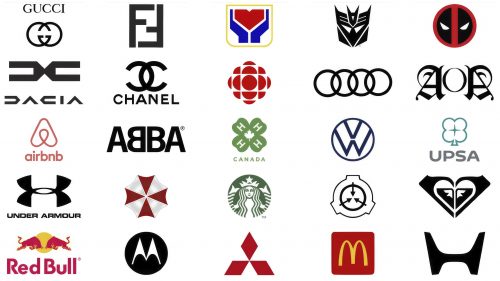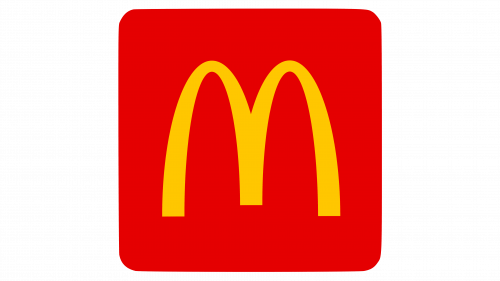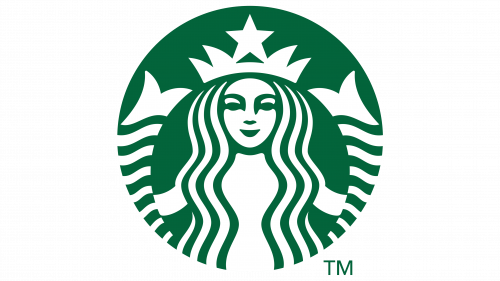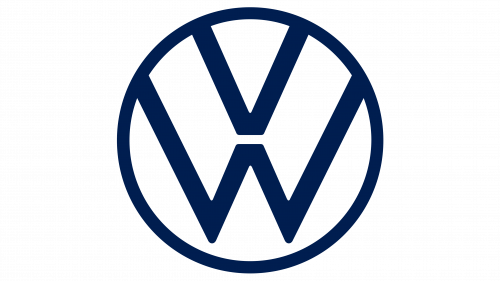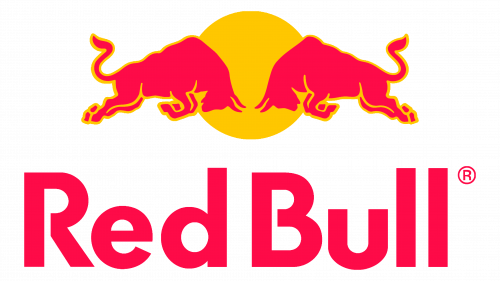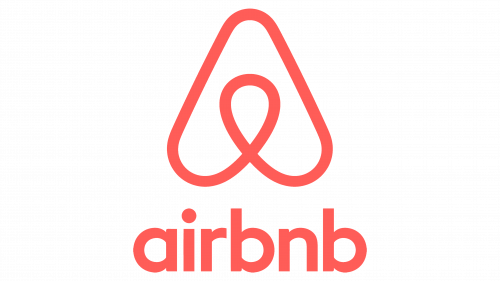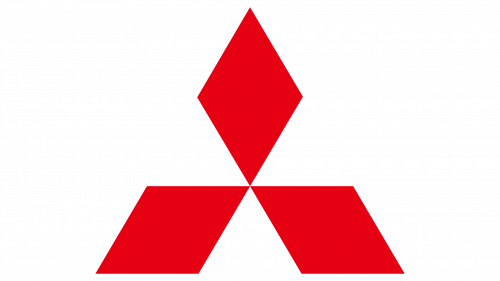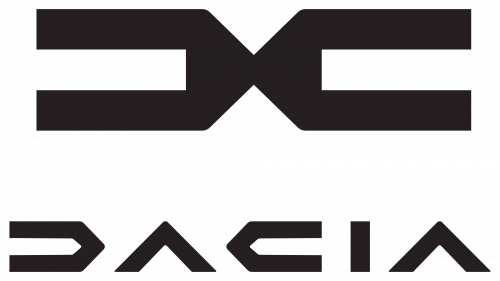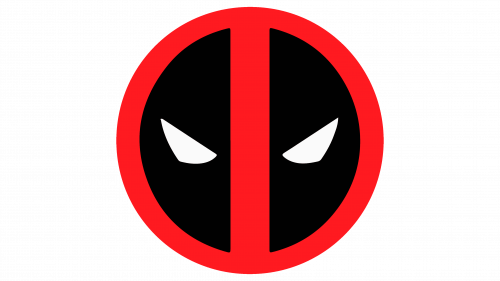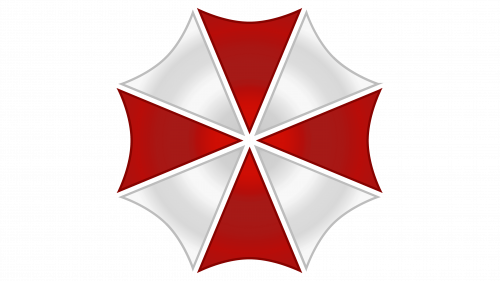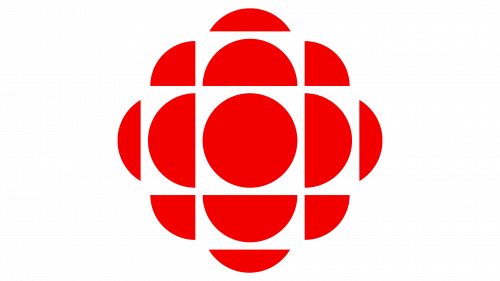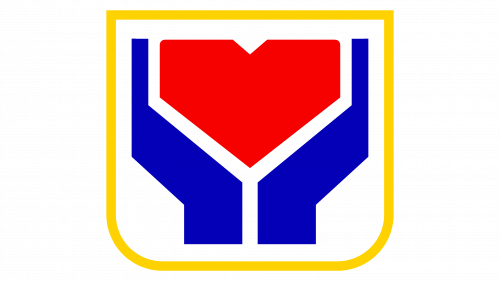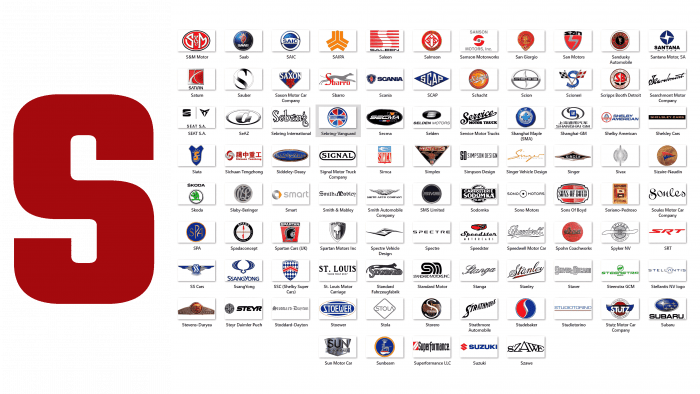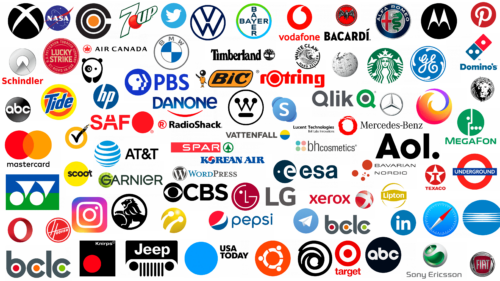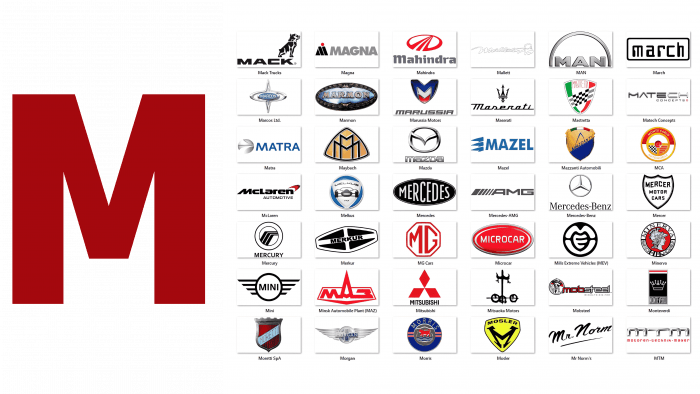Reflective logos bring a unique and captivating look to a brand, making it shine in today’s competitive market. By mirroring part of the logo, designers can create an effect that catches the eye and communicates deeper brand values such as balance, innovation, and luxury. Here’s a closer look at how reflective logos work and their impact on branding.
Features That Make Reflective Logos Stand Out:
- Symmetry and Balance: These logos often mirror elements to create a balanced look. This symmetry is more than just pleasing the eye; it suggests that the brand is stable and reliable.
- Depth and Dimension: Reflections add layers to a design, giving it a dynamic and engaging appearance. This depth helps the logo pop, making the brand more memorable.
- Innovation and Modernity: Reflective designs can signal a brand’s commitment to innovation. They have a modern feel, perfect for sectors that are all about the future, like tech or finance.
- Luxury and Sophistication: There’s something about a reflective logo that speaks of elegance. Brands aiming for a high-end image often use reflections to convey luxury.
The Impact of Reflective Logos on Branding:
- Boosting Brand Recognition: A well-crafted reflective logo can make a brand easier to remember. Its unique look captures attention and sticks in the memory.
- Highlighting Brand Personality: Reflective logos can say a lot about a brand’s character—whether it’s all about cutting-edge technology, unparalleled quality, or forward-thinking values.
- Creating an Emotional Connection: These logos’ visual appeal can draw people in, sparking curiosity and making them feel more connected to the brand.
- Versatility Across Mediums: A reflective logo can look fantastic everywhere, from digital screens to printed materials, helping maintain brand consistency.
Creating a reflective logo is about striking the right balance. The reflection shouldn’t complicate the logo but enhance its main features. Simplicity is key. The choice of colors and shapes matters, too, with bold lines and contrasting colors often making the reflection stand out best.
McDonald’s
Richard and Maurice McDonald opened the first McDonald’s in San Bernardino, California, in 1940. It started as a drive-in barbecue but changed in 1948 to focus on hamburgers, fries, and milkshakes, which made it very popular. Ray Kroc joined in 1954, selling milkshake machines and opening his McDonald’s in 1955 in Des Plaines, Illinois. Kroc eventually bought the company from the McDonald brothers and turned it into a big fast-food chain.
Under Kroc, McDonald’s grew a lot. They started selling shares to the public in 1967 and introduced the Big Mac in 1968. In the 1970s and 1980s, they grew worldwide, added drive-thrus, and made meals for kids. By the 1990s, there were over 10,000 McDonald’s worldwide. Now, there are over 38,000 in more than 100 countries. McDonald’s keeps updating its menu to include healthier options and things customers can customize.
The McDonald’s logo, the “Golden Arches,” is more than just a big ‘M’. It stands for the brand’s warmth, reliable service, and welcoming place for everyone. The design shows balance and the company’s promise always to offer good service and a positive experience.
Starbucks
Starbucks first opened in 1971 in Seattle’s Pike Place Market. Three friends from the University of San Francisco, Jerry Baldwin, Zev Siegl, and Gordon Bowker, opened it because they loved good coffee and wanted to share it with others.
When Howard Schultz joined Starbucks in 1982, he changed everything. After visiting Milan, Italy, and seeing their espresso bars, he wanted Starbucks to be like that. It took a while, but 1984 they started making espresso drinks, which was a big hit. Schultz liked the idea so much that he bought Starbucks in 1986 and opened more shops. By 1989, there were 46 stores, and they started selling food and cold drinks, too. After they sold shares to the public in 1992, Starbucks grew even faster, and by 2000, there were over 3,500 stores.
Now, Starbucks has more than 32,000 stores in 78 countries. They keep coming up with new ideas and are committed to being kind to the planet and making great coffee that brings people together.
The Starbucks logo, a twin-tailed mermaid or siren, is known worldwide. Old sea stories inspire it, and the logo represents Starbucks’ adventurous spirit and love for exploring different coffee flavors and traditions. It is a sign that welcomes all coffee lovers.
Honda
Honda was founded in 1946 in Hamamatsu, Japan, by Soichiro Honda and Takeo Fujisawa. They first worked on improving engines and then made motorized bicycles. Honda’s logo is a big “H.” It stands for precision, reliability, and balancing technology with people’s needs. The design shows Honda’s desire to be perfect in making things.
Honda made a big step by creating the S360 sports car in 1958 and then opened its first office outside Japan in Los Angeles in 1959. This helped Honda sell its products all over the world. In 1964, they built a motorcycle plant in Belgium. In 1970, they started making cars in the US with the Accord.
A big moment for Honda was in 1982 when they built a factory in Marysville, Ohio. This was the first time a Japanese car company made cars in the US using parts from there. In 1986, Honda started Acura, a luxury brand for North America. This showed Honda knows how to change and succeed in different places.
In 2005, Honda opened a new car factory in Canada. In 2021, they said they want to make only electric vehicles by 2040. This shows that Honda is thinking about the future and wants to improve things for the planet.
Now, in 2024, Honda works all over the world. They have factories in many places and sell products in over 200 countries. Honda keeps growing and making new things. They always try their best and do good things for people and the world.
Audi
Audi is a famous German car brand known for its fancy cars and new technology. Its logo has four rings, representing the long-ago joining of four car companies to make better cars.
A guy named August Horch started Audi in 1899. He first made a company to build cars, then started another one called Audi in 1909. In the 1930s, Audi joined with three other car makers, and they called this big group Auto Union. The four rings in the Audi logo are about these companies coming together.
World War II made things difficult for Auto Union, and they had to stop making cars. Later, in 1965, Volkswagen bought Audi and helped make it a big name in fancy cars.
With Volkswagen’s help, Audi made some cool things in the 1960s and 1970s, like cars with turbocharged engines and a special system that helps cars drive better on all kinds of roads. In the 1980s, Audi got famous in car racing with a car called the Audi Quattro. They also made other new models that lots of people liked.
Audi is part of the Volkswagen Group and continues to make luxury cars that combine good performance with safety. The four rings on every Audi car remind us of how four companies came together to make amazing cars.
Volkswagen
Volkswagen was founded on May 28, 1937, in Wolfsburg, Germany. Its founders wanted to create a simple, affordable car for everyone. This idea came to life with the Beetle, also called the Bug, in 1938. However, Volkswagen had to wait until after World War II to make many of them.
After the war, the British ran the Volkswagen factory for a while. Then, in 1948, it went to the West German government and Lower Saxony. The Beetle became very popular worldwide because it was practical and not expensive to own. By 1955, they had made over a million of them. Volkswagen grew by buying other car brands and creating new models, like the Golf in the 1970s. By the 1990s, Volkswagen was known for being innovative and making smart partnerships.
Now, Volkswagen is one of the biggest car makers in the world, right behind Toyota. They make over 10 million vehicles yearly under 12 brands like Audi, Bentley, and Porsche. More than 80 years after its founding, Volkswagen is still focused on safety, reliability, and innovation.
The Volkswagen logo, with a V and W inside a circle, represents the company’s goal of making good cars for everyone. Its simple and balanced design represents Volkswagen’s commitment to making well-engineered cars and its promise to bring new ideas to its customers worldwide.
Red Bull
In 1987, a man named Dietrich Mateschitz started Red Bull in Austria. He got the idea from a special drink in Thailand and thought something like it would do well in other places, too. He worked with the people who made the Thai drink, and together, they made Red Bull to help people feel more awake and full of energy. The Red Bull can have a picture of two red bulls ready to fight with the sun behind them, showing the drink is full of life and power.
At first, Red Bull tried to sell their drink to young people who work and go to school, saying it was good for staying awake because it had caffeine and other stuff like taurine and vitamins. It didn’t sell a lot initially, but more and more people started buying it after hearing about it from friends or seeing it at extreme sports events. Red Bull became popular because it made people think of adventure and fun.
In the 1990s, Red Bull started selling in other countries and quickly became the top energy drink everywhere. They kept getting people’s attention by doing fun things like sports events and introducing new drinks. Now, people drink over 9 billion cans of Red Bull yearly, and the company is worth about $25 billion. The Red Bull logo and what it stands for—giving people and their ideas a boost—has played a big part in its success.
Gucci
Guccio Gucci opened his first store in Florence, Italy, in 1921, starting a journey that made his brand a symbol of luxury and fine craftsmanship in fashion. He was inspired by the fancy luggage he saw while working at hotels in Paris and decided to bring that level of craftsmanship to the world through his leather goods. Gucci’s famous double ‘G’ logo, which stands for his initials, shows the brand’s focus on high quality and attention to detail. It’s all about making things that look great and last long.
From a small store in Florence, Gucci grew into a name known worldwide for Italian luxury. In the 1930s, they opened more stores, including in Rome, and became popular among Italy’s rich and famous. After Guccio Gucci passed away in 1953, his sons took over and expanded the brand even more, especially in the 1950s and 60s.
Even though the 1980s were tough for Gucci because of family disagreements, the 1990s brought new life to the brand. Leaders like Maurizio Gucci, Tom Ford, and Domenico De Sole helped Gucci become popular again. Today, with Alessandro Michele’s creative direction and as a key part of the Kering Group, Gucci has over 500 stores and is a big name in fashion. It keeps changing with time while still sticking to its roots of making luxurious, well-crafted items. The double ‘G’ logo remains a sign of Gucci’s ongoing commitment to making top-quality, elegant fashion.
Chanel
Coco Chanel started her fashion brand in 1910, becoming a symbol of luxury and style. The famous Chanel logo with two ‘C’ stands for Coco Chanel’s name. It shows how Chanel combines its classic style with new ideas.
Coco opened her first shop in Paris, selling women’s hats. She changed fashion by making simple, comfortable, and elegant clothes, moving away from tight and uncomfortable clothes. In the 1920s, Chanel introduced the famous Chanel No. 5 perfume and a cardigan jacket, which are still loved today. Coco’s designs were popular with the rich and women who liked modern, stylish clothes.
Chanel had to close during World War II, and Coco retired. But she came back in 1954 at age 71 with new designs. Karl Lagerfeld took over as the main designer in 1983 and worked until he passed away in 2019. He mixed modern styles with Chanel’s classic look, making the brand even more famous.
Now, Chanel has over 200 stores worldwide and is still owned by the Wertheimer family. Virginie Viard, who took over from Lagerfeld, is keeping Chanel up-to-date. Chanel continues to be a big name in fashion, carrying on Coco’s legacy.
Airbnb
In 2008, three friends in San Francisco, Brian Chesky, Joe Gebbia, and Nathan Blecharczyk, started Airbnb. They needed money for rent, so they turned their living room into a place for guests to stay, with air mattresses and breakfast. They made a website to find guests, and that’s how Airbnb began.
Soon, they got some money from investors and started growing fast, spreading to big cities in the U.S. People liked staying in someone’s home because it was cheaper and felt more real than a hotel. Airbnb began offering all kinds of places to stay, like apartments, houses, and even castles worldwide. By 2011, a million people had used Airbnb.
In 2012, Airbnb started growing in other countries, especially in Europe. They kept growing fast and became worth more than $1 billion. They had some problems with rules and hotels not liking the competition, but they worked to make their service safer and even added fancy places to stay and special travel experiences.
The Airbnb logo is called the “Bélo.” It looks like a heart, a map pin, and people together, showing that Airbnb is about feeling welcome anywhere. The logo is the same on all sides, showing everyone is included.
By 2020, when Airbnb went public, it was worth over $100 billion and had more than 6 million places to stay in almost 100,000 cities. Over 1 billion people have stayed with Airbnb, making it a big name in travel.
Under Armour
In 1996, Kevin Plank, who used to play football at the University of Maryland, started Under Armour. He didn’t like how cotton T-shirts got heavy when wet with sweat. So, he made a T-shirt from a fabric that didn’t hold onto moisture. This T-shirt helped athletes stay cool, dry, and comfortable.
Kevin began his business in his grandmother’s basement in Washington, D.C. Under Armour got a big chance in 1999 when its clothes were used in the movie Any Given Sunday, which made more athletes want to wear its products. Then, they started making shoes, too, like football cleats in 2006 and basketball shoes with NBA player Brandon Jennings.
Under Armour also began making products for women and young athletes, understanding that they have different needs for sports clothes and shoes.
Under Armour is known worldwide for its sportswear and shoes, which are good for sports and everyday wear. Their logo, which combines a U and an A, shows their focus on innovation, performance, and helping athletes be their best.
Mitsubishi
Mitsubishi’s story starts with Yatarō Iwasaki in 1870. He took a struggling ship business from the Tosa clan and turned it into a success. Mitsubishi means “three diamonds” in Japanese, which you can see in their logo. This logo shows the company’s focus on strength, good fortune, and health. It also shows how much they care about doing great work and always moving forward.
Over the years, Mitsubishi has achieved many firsts. In the 1890s, they built Japan’s first modern shipyard and started a steamship service. Later, they made ships and entered banking, insurance, cars, planes, and mining. They were always ready to try new things and plan for the future.
In the later years, Mitsubishi made some big moves. They started Mitsubishi Motors in 1970 and Mitsubishi Corporation in 1999. In 2019, they joined other big companies, like Nissan and Renault, showing they’re always looking to lead and work with others.
Now, Mitsubishi is one of the top companies in Japan, known for doing new things, having a variety of interests, and being successful for over 140 years. Their three-diamond logo still shows their promise to quality, balance, and looking ahead, making them stand out worldwide.
Motorola
Almost 100 years ago, two brothers named Paul and Joseph Galvin started a company in Chicago known as Motorola. This company was all about making communication easier and better. They started with something small—they made a gadget that let radios work using home electricity. Then, they made a big leap by creating car radios, which was pretty new. They even came up with Motorola, a mix of “motor” for cars and “ola,” which means sound, to show they were all about moving and sound.
Motorola didn’t stop there. They kept making new things, like walkie-talkies for police and firefighters in the 1940s. In the 1980s, they made the first cell phones that people could carry around, which was a huge deal. Even though they had some tough times when smartphones became popular, they shifted their focus to making equipment for communication systems, which was important for jobs where getting messages quickly could save lives.
In 2011, Motorola split into two parts. One part, Motorola Mobility, kept making cellphones and was bought by two big companies, first Google and then Lenovo. The other part, Motorola Solutions, focused on equipment for businesses and governments. This way, Motorola kept being a big name in the world of communication, staying true to its roots of making talking to each other easier and better, with their famous logo, a simple “M,” showing how they blend new tech with classic design.
Dacia
Dacia, a Romanian car brand, is known for making cheap and reliable cars. Recently, they showed off a new logo that looks modern and simple. It’s made up of letters that form a special pattern, showing that Dacia likes to keep things straightforward and practical.
Dacia was started in 1966 by the Romanian government. Their first car, the 1300 series, came out in 1968 thanks to a deal with the French car maker Renault. Over the years, Dacia made good cars for people who didn’t want to spend much money, especially in Eastern Europe.
After 1989, when Romania’s government changed, Dacia started a new chapter. Renault bought Dacia in 1999 and helped make their cars better and more modern. In 2004, they launched the Logan, which helped Dacia sell cars in other countries, not just cheap ones but good-quality ones that didn’t cost much.
Dacia kept growing by adding new models like the Sandero and the Duster SUV. They focused on making useful cars that last a long time and don’t cost too much. Dacia is now Romania’s biggest exporter of cars and is part of Renault’s plan to compete with other car brands that focus on value, like Skoda and Citroen. Dacia has made over 3 million vehicles, proving that you can make good cars that aren’t expensive.
Fendi
In 1925, Adele and Edoardo Fendi started a small shop in Rome. They were known for making high-quality leather and fur items. Over time, their five daughters helped make Fendi famous worldwide.
In the 1950s and 60s, Fendi changed how people saw fur, making it a modern luxury item. Karl Lagerfeld joined in 1965, bringing new ideas and creating the famous double F logo for quality and creativity. He helped Fendi become a top fashion name with unique bags and accessory designs.
The 1970s and 80s were about growing bigger, opening stores in big cities, and adding more products like perfume, kids’ clothes, home stuff, and men’s fashion. When LVMH joined Fendi, it became even more well-known around the world. After Lagerfeld passed away in 2019, Silvia Venturini Fendi took over, keeping the brand fresh and true to its Italian roots.
The Fendi logo, with two Fs facing each other, is a simple symbol that showcases the brand’s long history and modern approach.
Now, Fendi is celebrated for its craftsmanship in fur and leather, standing as a symbol of Italian luxury. It’s a success story of creativity and innovation from its founders to today’s leaders.
ABBA
ABBA started in Stockholm in 1972 with two couples, Agnetha and Björn, and Anni-Frid and Benny. They became famous fast. Their song “Ring Ring” in 1973 was a hit, and winning the Eurovision Song Contest in 1974 with “Waterloo” made them even more popular. They had many hits like “Mamma Mia” and “Dancing Queen.” Even when the couple divorced, they kept making music until 1982.
Their music stayed popular in the 80s and 90s, and the musical “Mamma Mia!” brought in new fans. ABBA came back together in 2016 to make two new songs and released an album called “Voyage” in 2022. They also had a concert in London with digital versions of themselves from the 70s.
ABBA’s logo has a backward “B,” which shows how well the members worked together. Over five decades, ABBA went from a small band in Sweden to one of the most loved music groups worldwide.
Deadpool
Deadpool appeared in “The New Mutants #98” comic in February 1991. Created by Rob Liefeld and Fabian Nicieza, he started as a bad guy but became a favorite hero for many fans. He’s often known for joking, even about being a comic book character. Deadpool has a logo with a skull and two swords, showing his mix of chaos and humor.
In 1993, Deadpool got his comic series, which helped make him a hero with a complex and funny personality. He became more popular in the 1990s, appearing in many comics where he did different jobs, from being a mercenary to a hero. His story has sad and crazy parts, making him very unpredictable.
The 2000s brought even more fans to Deadpool, thanks to his comic books, in which he fights and jokes uniquely. He also appeared in video games, cartoons, and a popular movie in 2016, making him even more loved.
Today, Deadpool is still a big part of Marvel comics, known for its humor and exciting stories. He has become one of Marvel’s most well-liked characters across comics, movies, and more.
Roxy
In 1990, Quiksilver started Roxy, a women’s surf and snowboard clothes brand. It quickly became important for women who liked board sports. Roxy opened its first store in 1991 in Huntington Beach, California. The brand has a special logo resembling two Quiksilver symbols, making a heart that focuses on women who love sports and fashion.
Roxy wanted to celebrate women’s sports and adventures. It got popular by showing off talented female surfers like Lisa Andersen. The 1990s were big for Roxy, making it a key name in women’s surfing and snowboarding.
In 1998, Roxy began making swimwear, reaching more people with beachwear and accessories. This helped the brand keep its special style but attract a broader audience. Roxy grew worldwide in the 2000s, opening stores in Canada, Europe, and Australia.
Even when Quiksilver faced financial troubles and filed for bankruptcy in 2013, Roxy did well. Now, Roxy has about 100 stores worldwide. It sells gear for surfing, swimming, snowboarding, and everyday clothes. Roxy still supports big female athletes in board sports from its base in Huntington Beach, inspiring women everywhere.
Hilton Garden Inn
Hilton Worldwide started Hilton Garden Inn in 1996 because they needed a hotel that wasn’t too fancy but also not too basic. It was perfect for people traveling for work and fun who wanted a nice place to stay without spending too much. The first one opened in Atlanta in 1997 and had everything travelers could want, like places to meet, work out, and fast internet.
Over time, Hilton Garden Inn grew a lot. It started in the U.S., but by 2008, it opened a hotel in England and kept expanding to other countries. Hilton spent a lot of money to make Hilton Garden Inn known worldwide, including in Europe and Asia. By 2015, there were over 650 of these hotels everywhere.
Hilton Garden Inn has been working on making stays even better for guests. They’ve added new food choices, are helping the environment, and use the latest technology so guests can check in with an app.
Now, there are almost 950 Hilton Garden Inn hotels worldwide. They’re in big cities and business areas to help travelers. The brand’s hibiscus flower logo shows it’s all about giving guests a nice and friendly place to stay. This logo also means Hilton Garden Inn promises always to be good and consistent wherever you go.
SCP Foundation
The SCP Foundation started from a small idea on a forum about a spooky statue that could harm people. This idea grew into a big story about a group that keeps weird and magical things safe. They find, grab, and look after these strange things to protect everyone. Their stories are called “SCPs.”
In January 2008, the SCP Foundation got its website. At first, just a few people made up stories about SCPs and shared them online. But soon, more and more people joined in from places like 4chan and Reddit. They wrote about all sorts of SCPs, making the SCP world bigger and richer.
By July 2008, the project had moved to Wikidot, making it easier for even more people to add their stories. This added new types of stories, deep histories, and even other worlds to the SCP universe. The SCP Foundation got so popular that it inspired video games and more.
In 2024, the SCP Foundation shows how cool it is when many people come together to create. There’s a huge collection of spooky and mysterious stories. The SCP logo, with three arrows pointing to a circle, shows what the Foundation is all about, keeping weird things contained and keeping everyone safe.
Umbrella Corporation
The Resident Evil series tells a story about the Umbrella Corporation, a huge company known for making medicines and bioweapons, which caused a lot of trouble. The company’s logo, a red and white umbrella covering the earth, shows they are everywhere and tried to hide their bad actions. This logo looks calm and safe, but the company is doing dangerous and evil things.
The company was started in 1968 by Oswell E. Spencer, James Marcus, and Edward Ashford in Raccoon City. They first wanted to make new medicines but soon started working on viruses and bioweapons. In 1977, they found a virus that allowed them to secretly make even more dangerous weapons.
Umbrella conducted risky virus tests for years, creating monsters called B.O.W.s while pretending to be a normal medicine company. A big accident 1983 at a hidden place near Raccoon City showed how dangerous their T-virus was. In 1988, they even killed one of their scientists, James Marcus, to stop a fight inside the company, which led to the creation of more scary monsters.
In 1998, the T-virus spread in Raccoon City, turning it into a place full of zombies. Umbrella tried to destroy the city to stop the virus but couldn’t hide what they did wrong. Albert Wesker, one of their own, turned against them and shared their secrets. This and trouble from governments and people everywhere caused Umbrella to collapse by 2003. Their story is a lesson in wanting too much power and making terrible mistakes.
Decepticon
In September 1984, the Decepticons were introduced to fans through Marvel Comics, and later, IDW Publishing also featured them. These robots, led by Megatron, became well-known in the Transformers world. They can change into different high-tech machines like military vehicles and sports cars, which makes them very tough to beat. In Japan, they are called Destron or Deathtron, and Megatron is known as the Emperor of Destruction, which shows how powerful and important he is.
The Decepticons stand for wanting power and never giving up. Their symbol, which looks like the face of a Decepticon, shows their scary power and how organized they are in trying to be the bosses of everything. The design of their logo is neat and balanced, showing that even though they might want to cause trouble, they are very united and good at planning to reach their goals. This symbol shows what the Decepticons are all about being a strong, organized group always trying to win.
AOA
AOA, short for Ace of Angels, was created by FNC Entertainment in 2012 and quickly became known in the South Korean music world. Their logo has two ‘A’s with an ‘O’ in the middle, showing how together and in harmony they are.
They started with a song called “Elvis” in 2012, mixing dance and rock in their music. Their first album, “Angels’ Story, caught everyone’s attention.” The group had seven members at first but became six after Youkyung left in 2013.
Their big break came with the song “Miniskirt” in 2013, making them very popular. They kept making hits like “Short Hair,” “Heart Attack,” “Like a Cat,” and “Good Luck.” In 2016, they even had a sub-group called AOA Cream and got their first top hit with “Good Luck.”
2017 was a great year for them; the top songs, “Excuse Me” and “Bing Bing” also did well in Japan. However, in 2019, Choa left the group, and they became five members. Their last song before some members left the company was “Come See Me,” ending their time together after seven years.
Many fans worldwide loved AOA; it won many awards and made a lasting impression on K-pop music. Their logo reminds people of their style and how well they worked together.
4H
4H started in the early 1900s to teach kids about farming. Over time, it grew to include more topics like science and being a good citizen. The Smith-Lever Act of 1914 helped spread these programs all over the country by giving them support from the government.
The symbol of 4H is a four-leaf clover. It stands for improving yourself in four ways: your brain, your heart, your hands, and your health. This symbol shows 4H’s goal of helping kids grow in many ways, not just in farming.
Big things happened for 4H in the 1920s and 1950s, like getting more support from the government and building a big center in Washington DC. These steps helped 4H reach more kids and teach them about different subjects, not just farming.
Now, 4H is part of universities and gets help from the government. It reaches over 6 million kids every year. From its simple start, 4H has grown a lot. It works hard to help kids learn and become leaders in many areas.
CBC
The Canadian Broadcasting Corporation, or CBC, was established in 1936 by the government of Canada to share Canadian stories and news across the country. At first, it took over from an earlier group and began with radio in 1937, just in time for King George VI’s coronation. This was a big moment because it helped connect people all over Canada.
In 1952, CBC started broadcasting TV shows, with the first TV station opening in Montreal. This was a big step because CBC could show even more Canadian stories, news, and shows in English and French. They wanted to ensure Canadians had their shows, not just American ones. This helped make Canada’s culture even richer.
As time went on, CBC kept up with new technology. They started using the internet and mobile apps to share content so people could watch or listen anytime, anywhere. They also began streaming services and focused on Canadian stories online, making sure they stayed important and relevant.
The CBC logo looks like an eye or a lens and represents what CBC wants to do: share different stories and viewpoints from Canada and the world. It reminds everyone that CBC wants to include all kinds of voices and be fair and open. This logo shows that the CBC is like a cultural messenger for Canada, bringing people together and sharing Canadian culture.
DSWD (Department of Social Welfare and Development)
The Department of Social Welfare and Development, or DSWD, was established in the Philippines on November 1, 1939. It helps people who don’t have much and works to improve their lives. The DSWD has a special logo showing a person in hand, which means it is all about protecting and helping people who need it and treating everyone fairly.
At first, the DSWD was set up to help people during World War II when the Philippines was under Japanese control. After the war, they rebuilt the agency to help even more people and called it the Social Welfare Administration. By 1968, it got a new name, the Department of Social Welfare, and began to focus on all sorts of ways to help people improve their lives.
After the big changes in the Philippines in 1986, the department got its current name and grew significantly. It began new programs to help families get better health care, food, and education. Over the years, its budget has gotten bigger, so it could help more people.
Now, with a big budget, the DSWD works hard to ensure that people in the Philippines who need help get it live up to its goal of caring for and supporting everyone equally.
UPSA
Back in 1935, in France, a guy named Henri Meux started a company called UPSA. It was a small place at first, making medicines in Agen. They got good at making things to help with pain, fevers, and colds. One of their big hits was a medicine called Dafalgan.
As time passed, UPSA got bigger thanks to teaming up with other companies. In 1977, a big company from Belgium called Beecham helped them grow. Then, in 1982, they built a new place in Agen to make even more medicines. Later, in 1996, they joined a British company called Bristol-Myers Squibb (BMS), which helped them reach more people worldwide. BMS even made UPSA the main company for Dafalgan, focusing on France and Europe.
UPSA’s logo, balanced design, and trustworthy colors show that it is all about caring for health and making discoveries.
In 2014, a company from Japan called Taisho Pharmaceutical bought UPSA for a lot of money. This started a new chapter, bringing in some Asian ideas. UPSA is now in Rueil-Malmaison, France, and is still leading in making medicines for pain, fever, and coughs, with famous names like Dafalgan, Fervex, and Humex. From Henri Meux’s first idea in 1935, UPSA has always been about helping people stay healthy.
